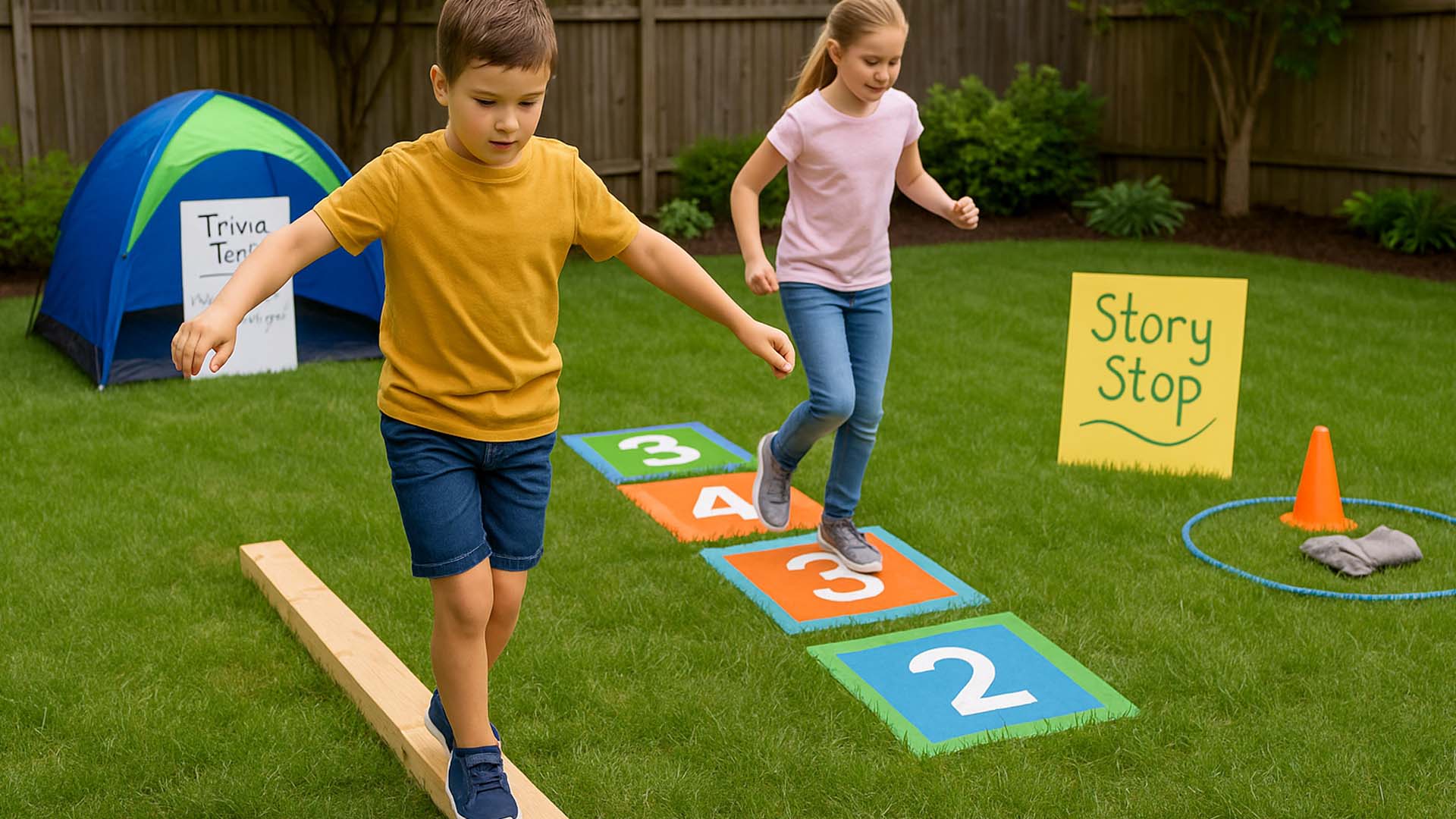Bring the field day home! DIY backyard obstacle courses blend physical activity with educational mini‑challenges—like math jumps or story prompts—creating immersive fun that engages young minds and bodies. Inspired by family fitness trends, these courses promote health, problem-solving, and play .
Key Elements to Include
- Balance Beam: Use a plank or tape line for balance drills.
- Hop-Count Squares: Numbered boxes prompt math problems.
- Trivia Tents: Quick quiz questions related to recent learning.
- Story Stop: Kids narrate a short story before continuing.
- Relay & Toss Zones: Beanbag toss or mini relay races reinforce coordination.
Benefits for Families
- Active Learning: Combines exercise and cognitive stimulation.
- Adaptable Difficulty: Great for multiple ages—modify for skills.
- Family Bonding: Build, play, and cheer together.
- Outdoor Time: Encourages screen-free, healthy play.
Setup Tips
- Add timers to gently encourage friendly competition.
- Adapt tasks per child’s strength or interests—science facts for budding investigators.
- Involve children in course design—foster creative engagement.
- Celebrate completion with homemade medals or certificates.
Conclusion
DIY backyard obstacle courses transform outdoor spaces into dynamic classrooms and playgrounds. By layering physical feats with educational challenges, they cultivate fitness, curiosity, and family cohesion—all while having a blast.
Q&A Section
Q1: How much space is needed?
A1: A small yard works—focus on zones rather than large tracks.
Q2: Are these challenging for all ages?
A2: Yes—adjust difficulty by height, distance, or question complexity.
Sources:
- FamilyFun magazine on backyard obstacle courses








0 Comments